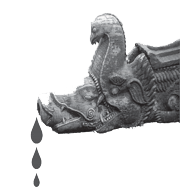Treatment of source water involves the removal of physical and chemical ingredients from raw water to a generally accepted level (as stated by WHO) to produce water that is portable and ready for the filtration without any short term or long term risk of any adverse health effect. Substances that are removed during the process of source water treatment include suspended solids, and minerals such as iron, hardness, pH, ammonia and manganese.
The processes involved in removing such physical and chemical properties include physical processes such as resolving and filtration, disinfection and biological processes such as Rapid sand filtration and other filtration process.
The most common type of treatment filtration that we are Splash (Prabhav) Nepal is using is a Rapid sand filter Water moves vertically various media like fine sand, activated carbon, BIRM media, MNO2 etc. To clean the treatment system, water is passed quickly upward through the treatment system, opposite the normal direction (called back flushing) to remove embedded particles. Filters out much smaller particles than sand filters can.
Features:
- Filters out virtually all particles larger than their specified pore sizes.
- They are quite thin and so liquids flow through them fairly rapidly.
- They are reasonably strong and so can withstand pressure differences across them of typically 2–5 atmospheres.
- They can be cleaned (back flushed) and reused.
- It has Flow rate capacity of 3000 liter per day.

